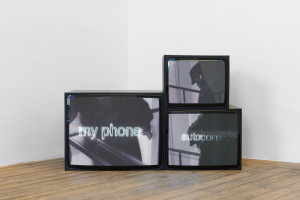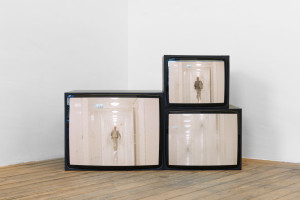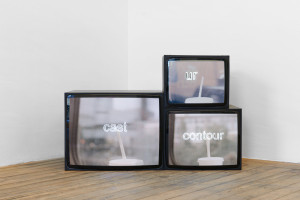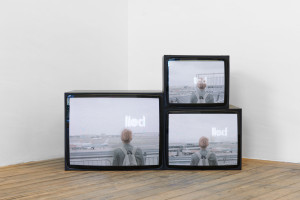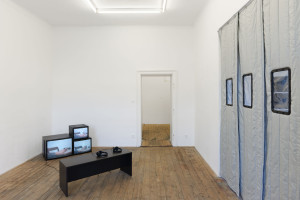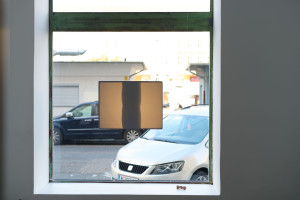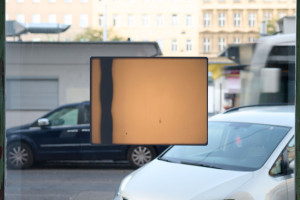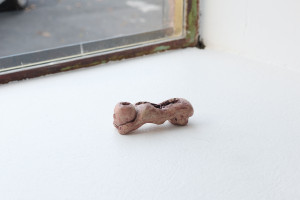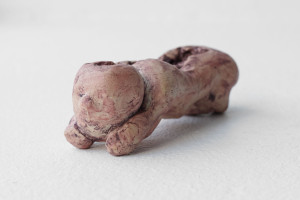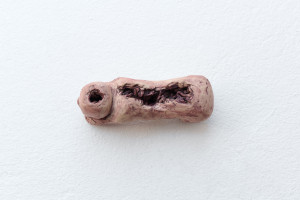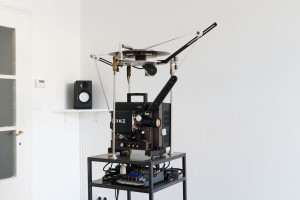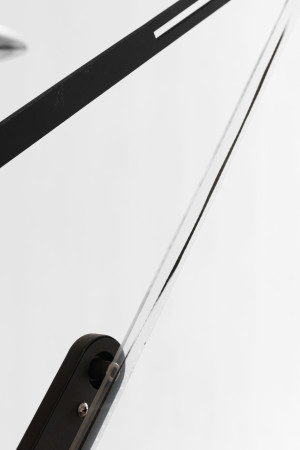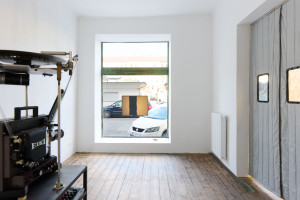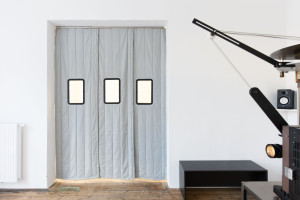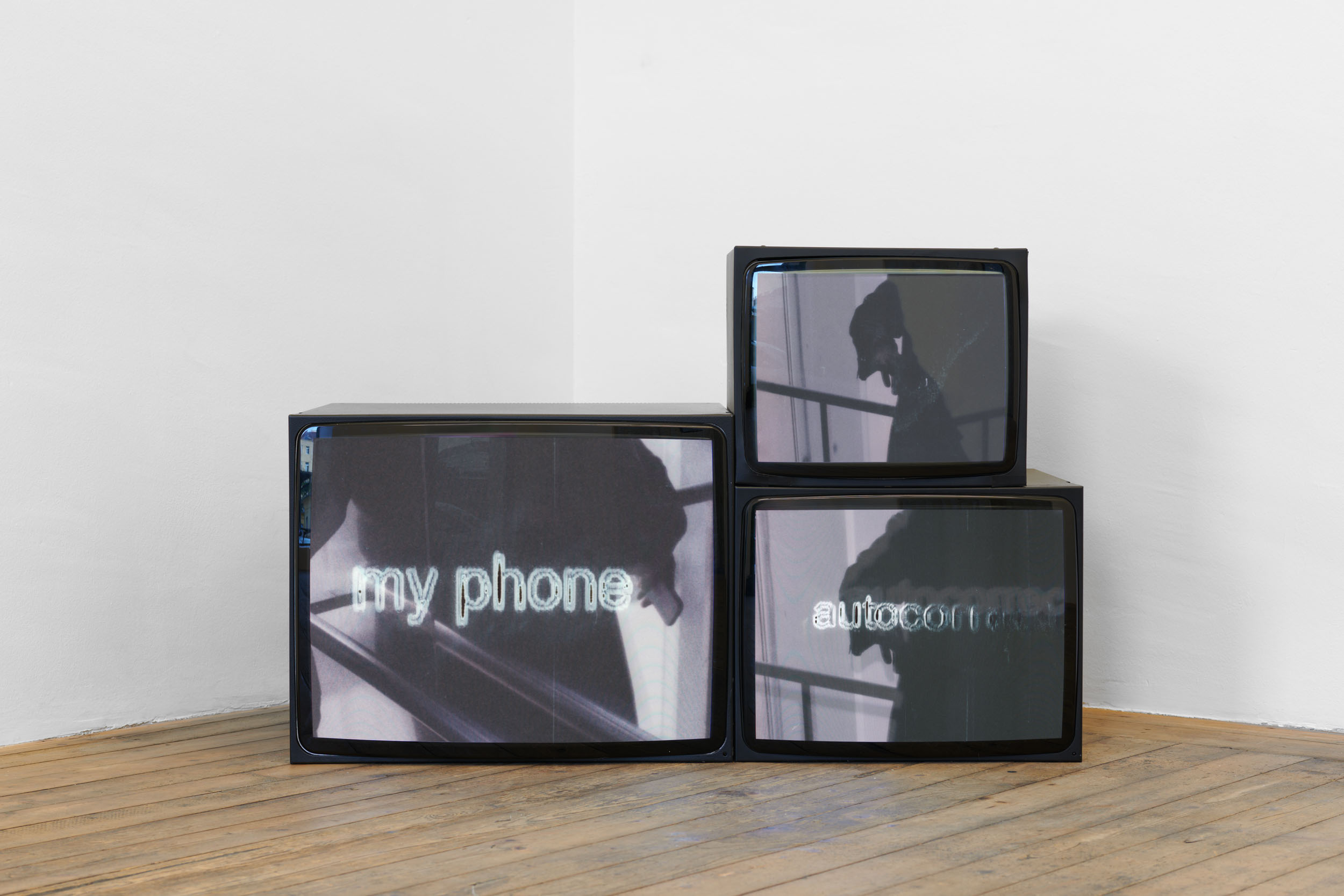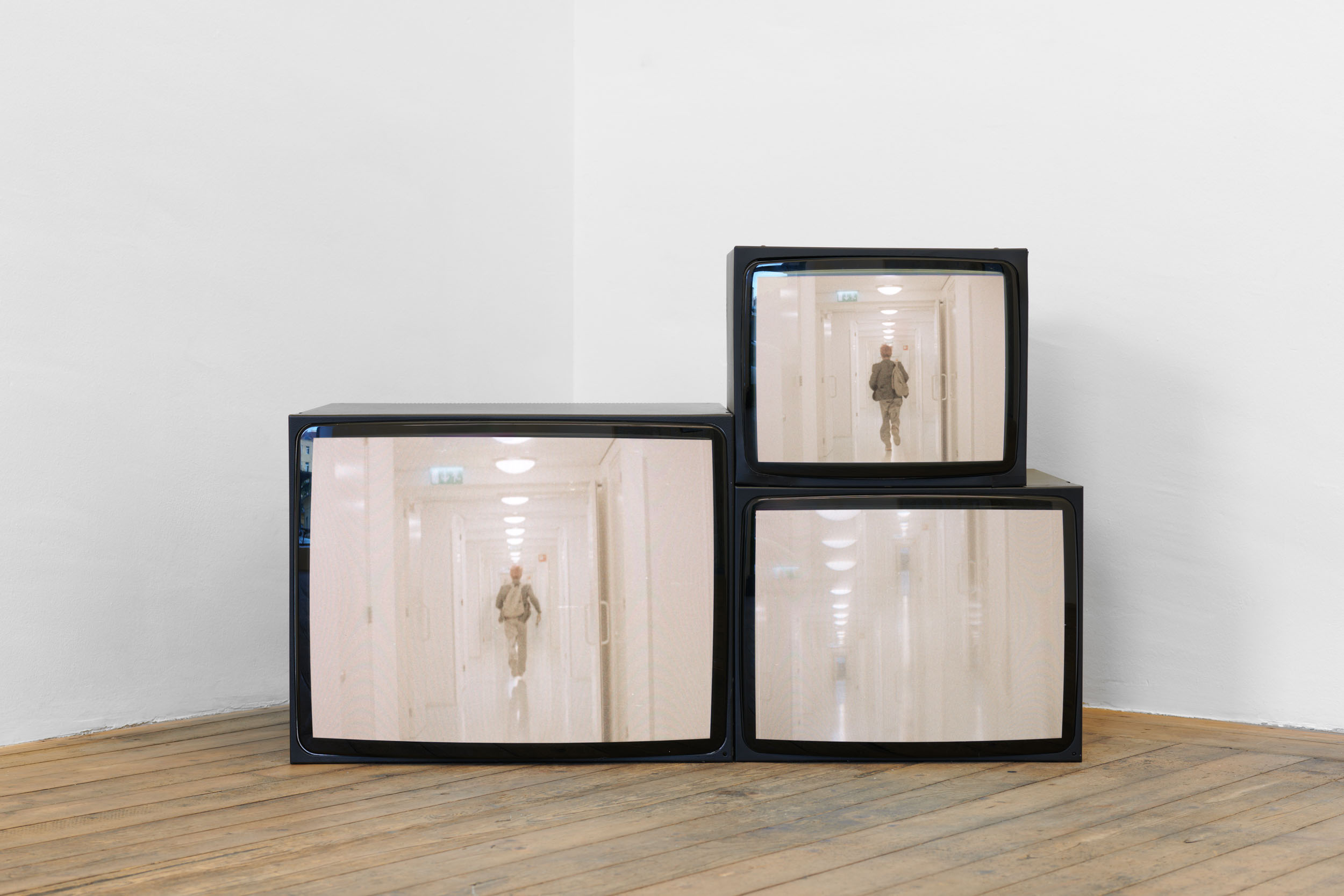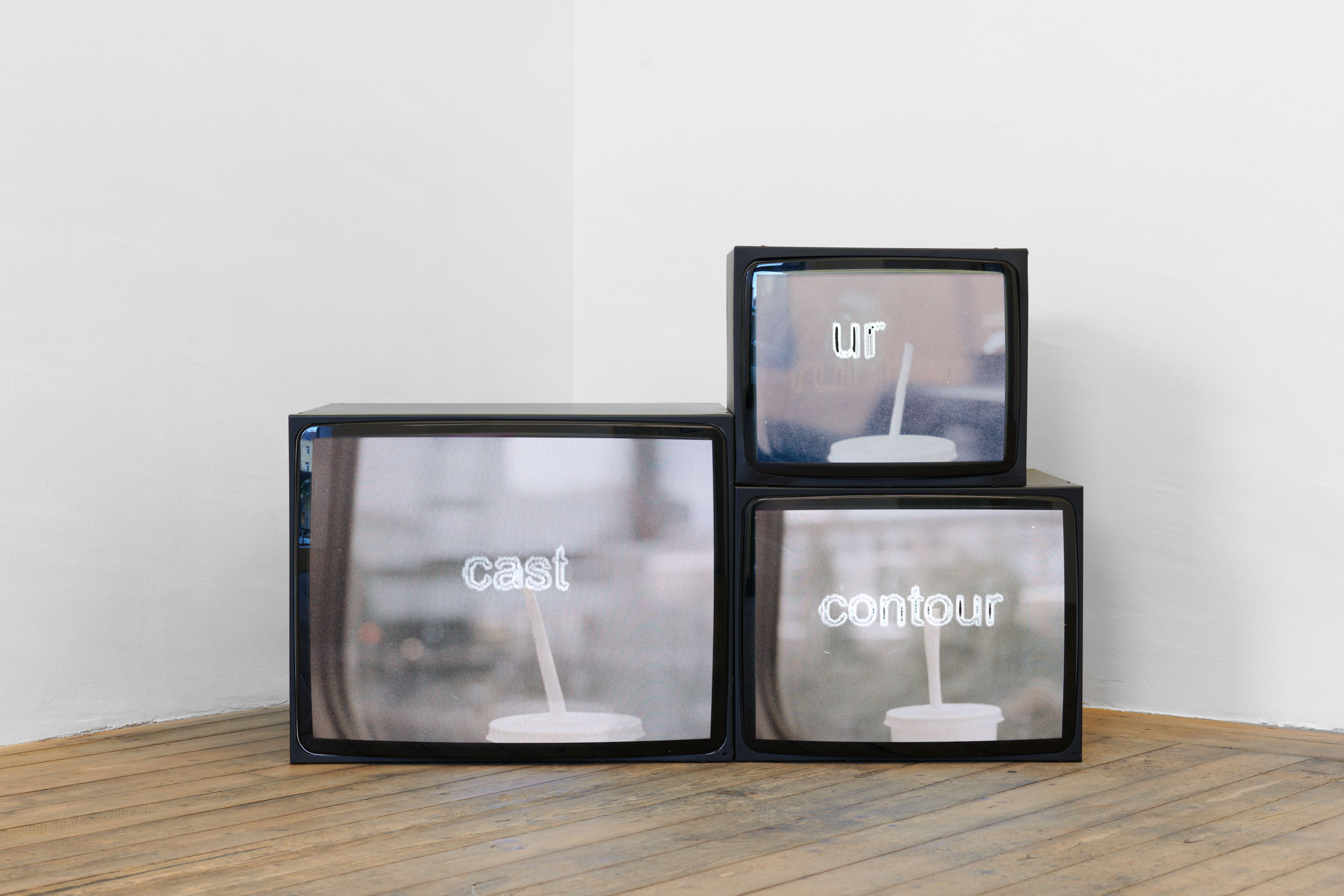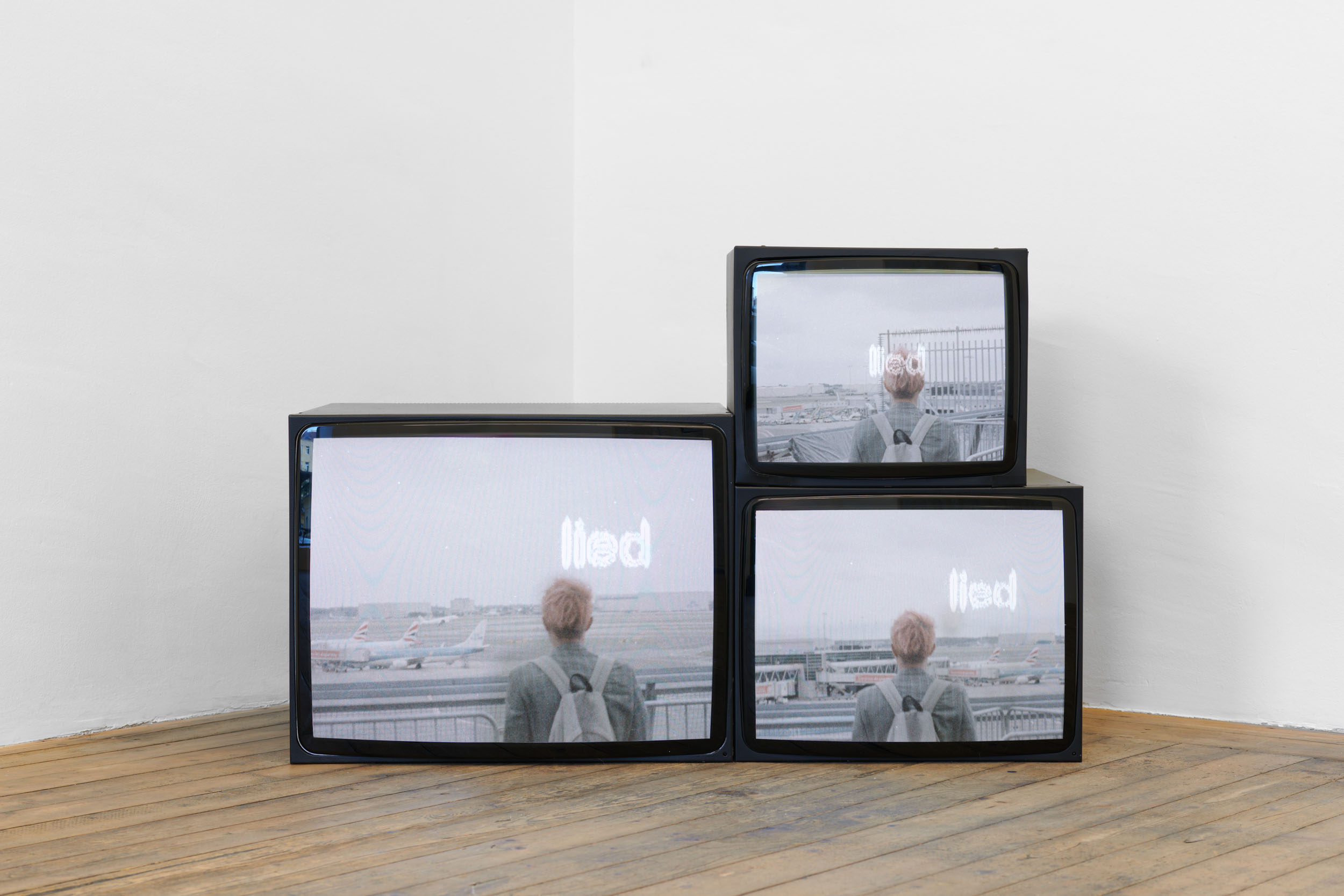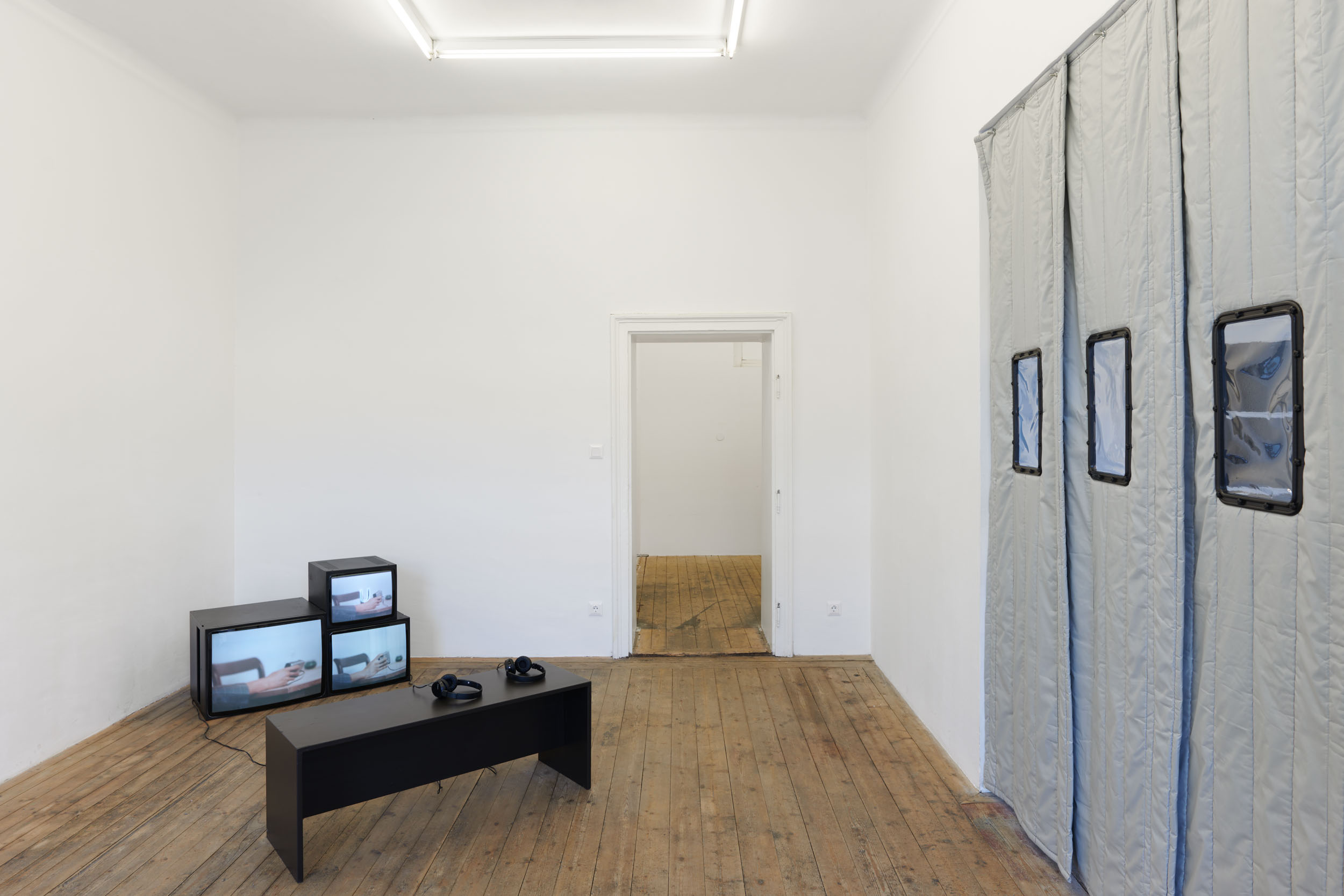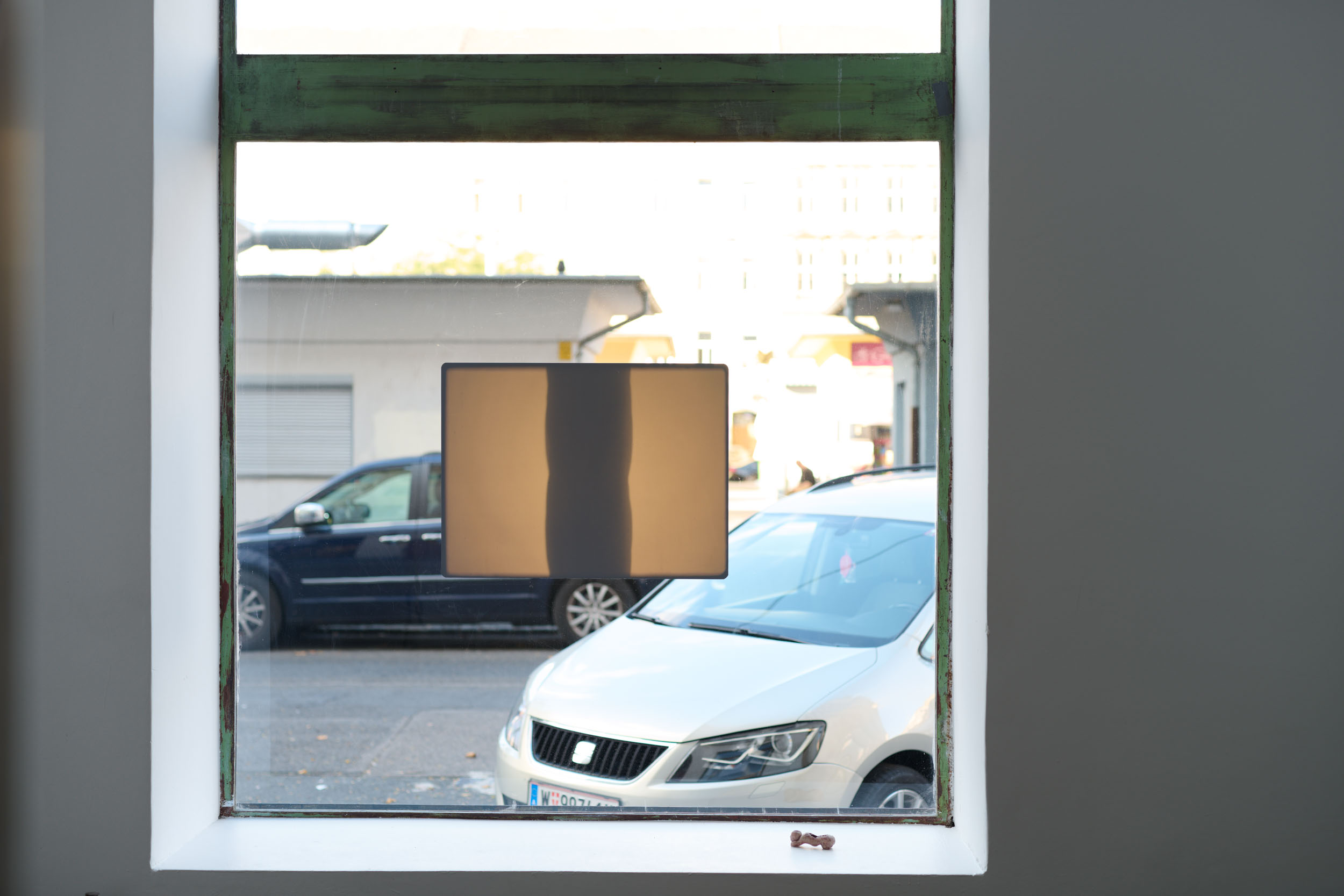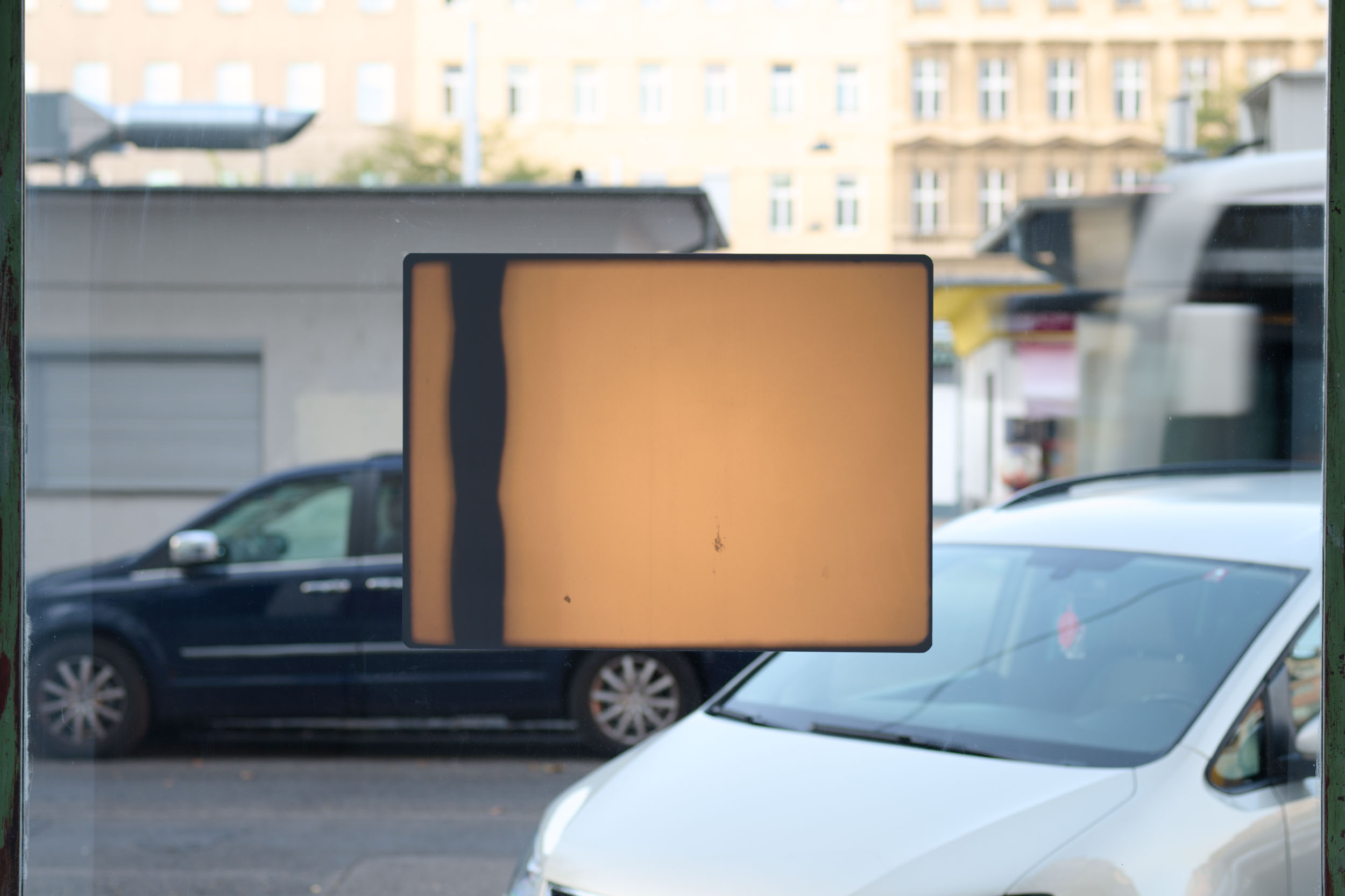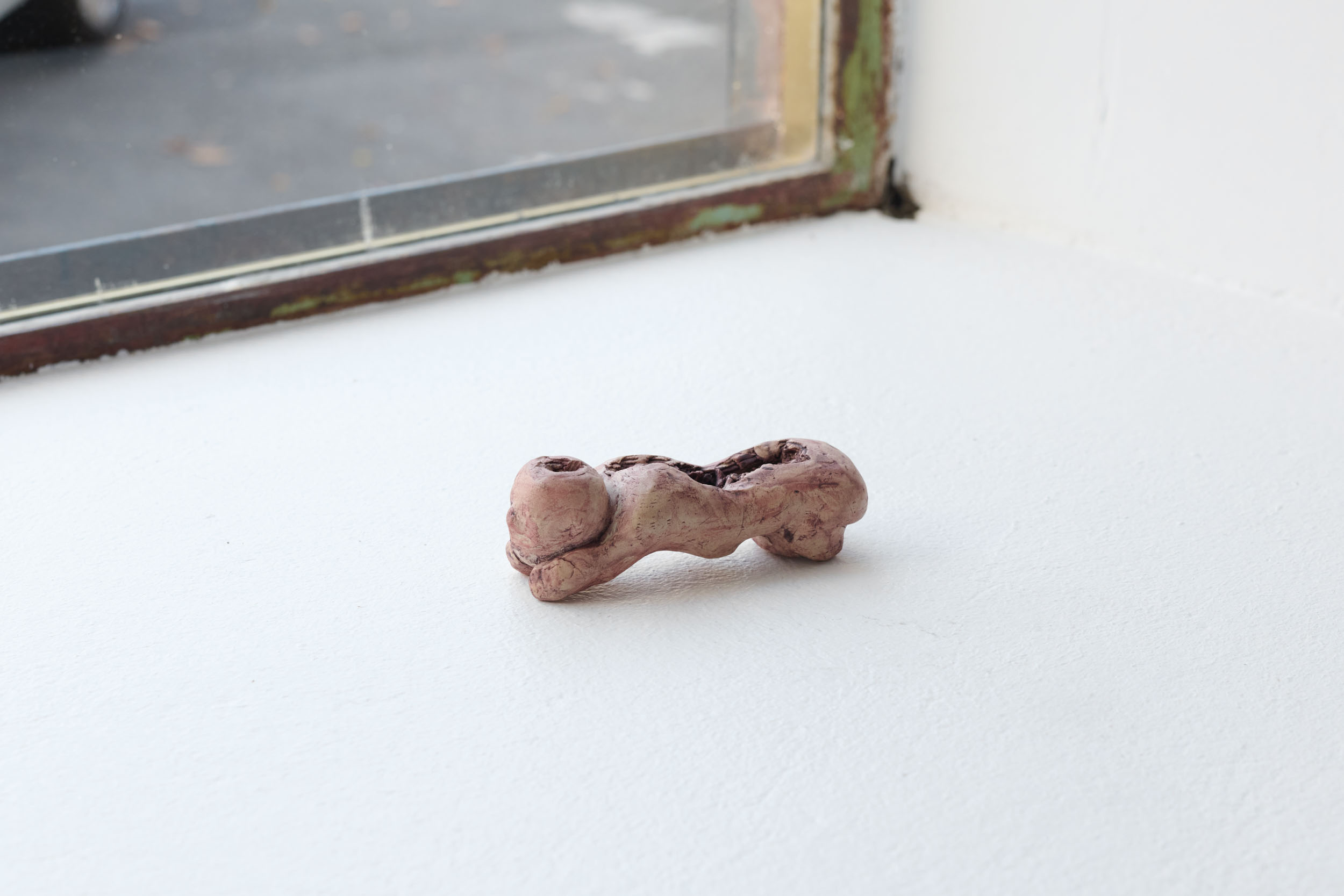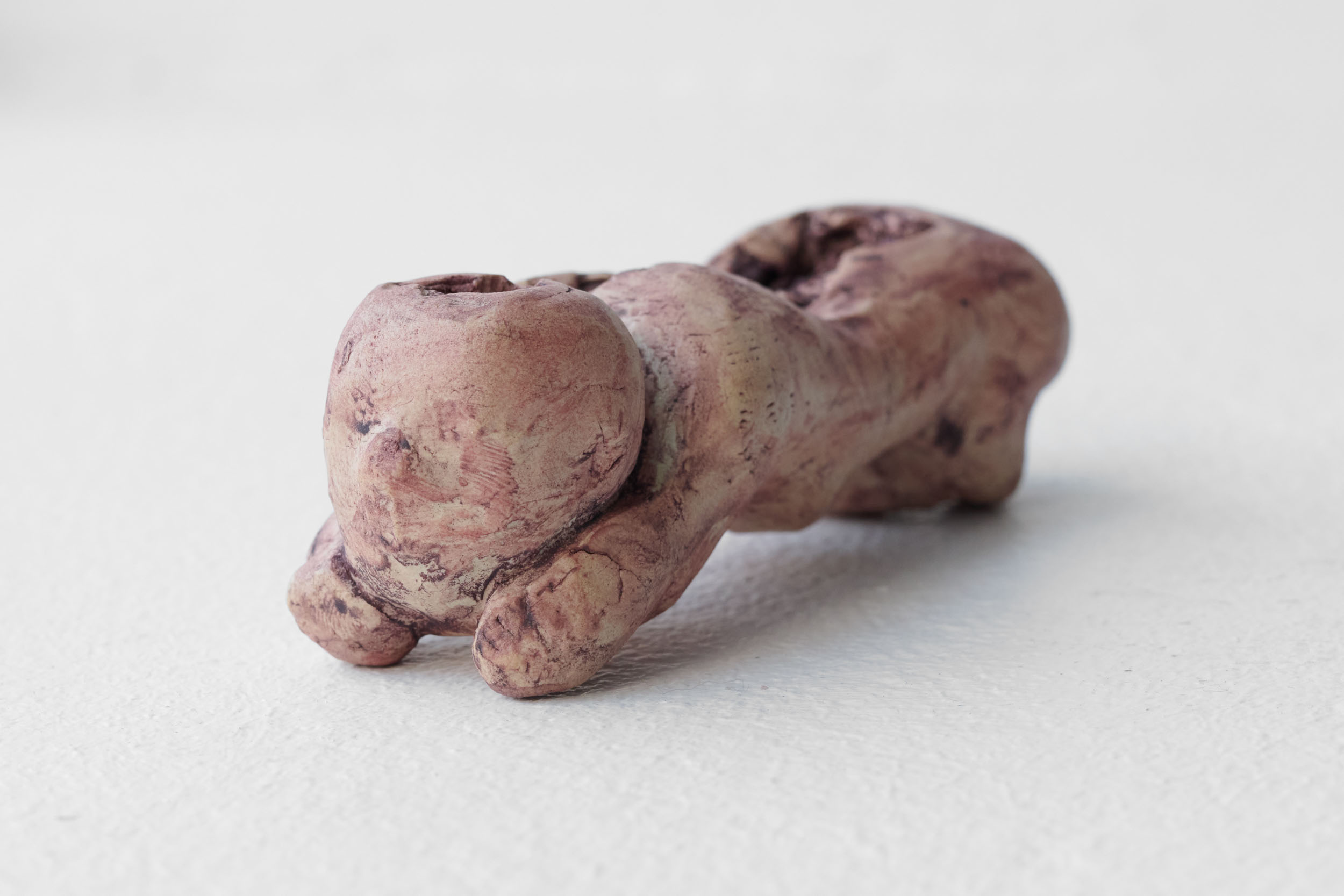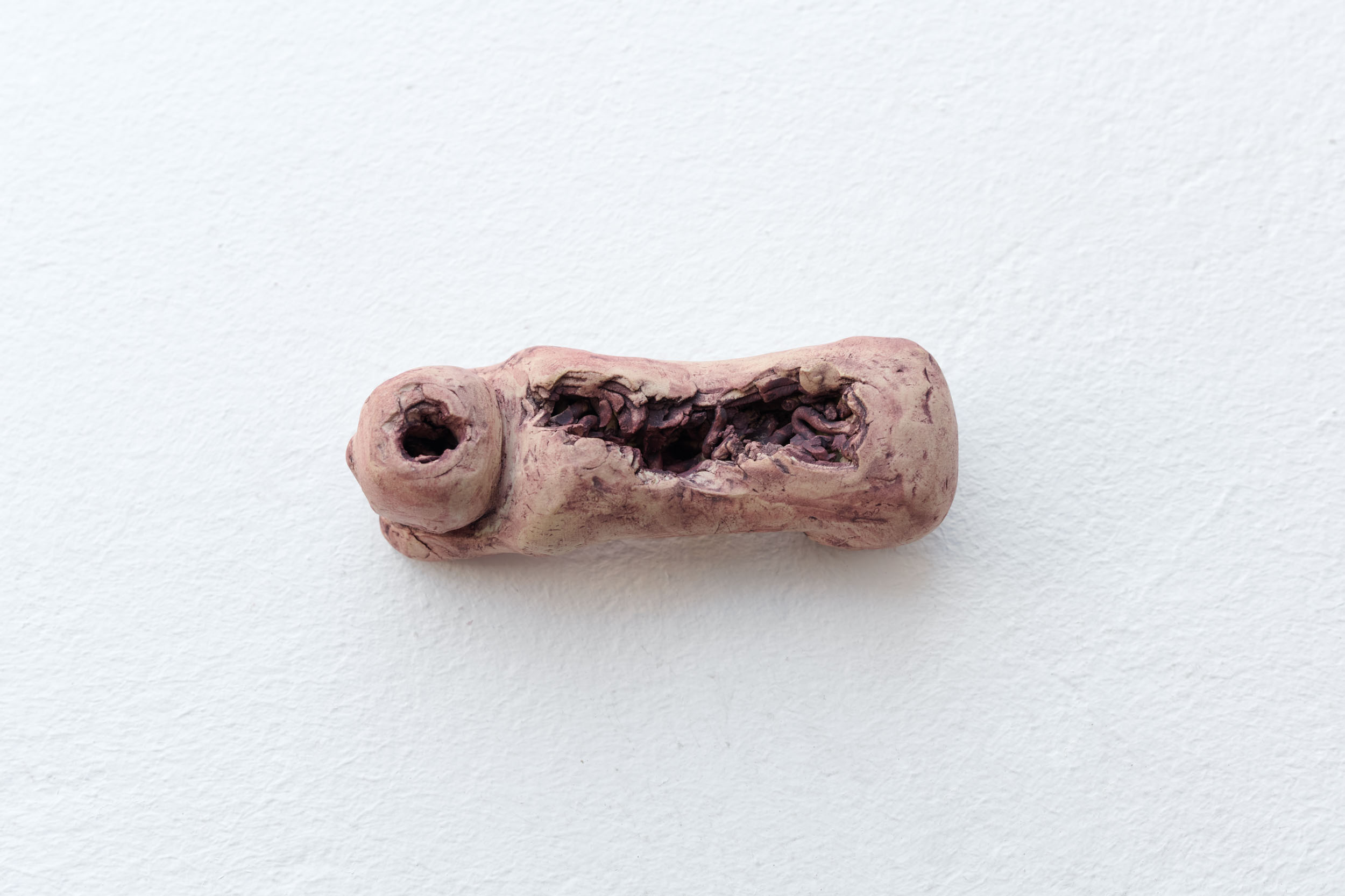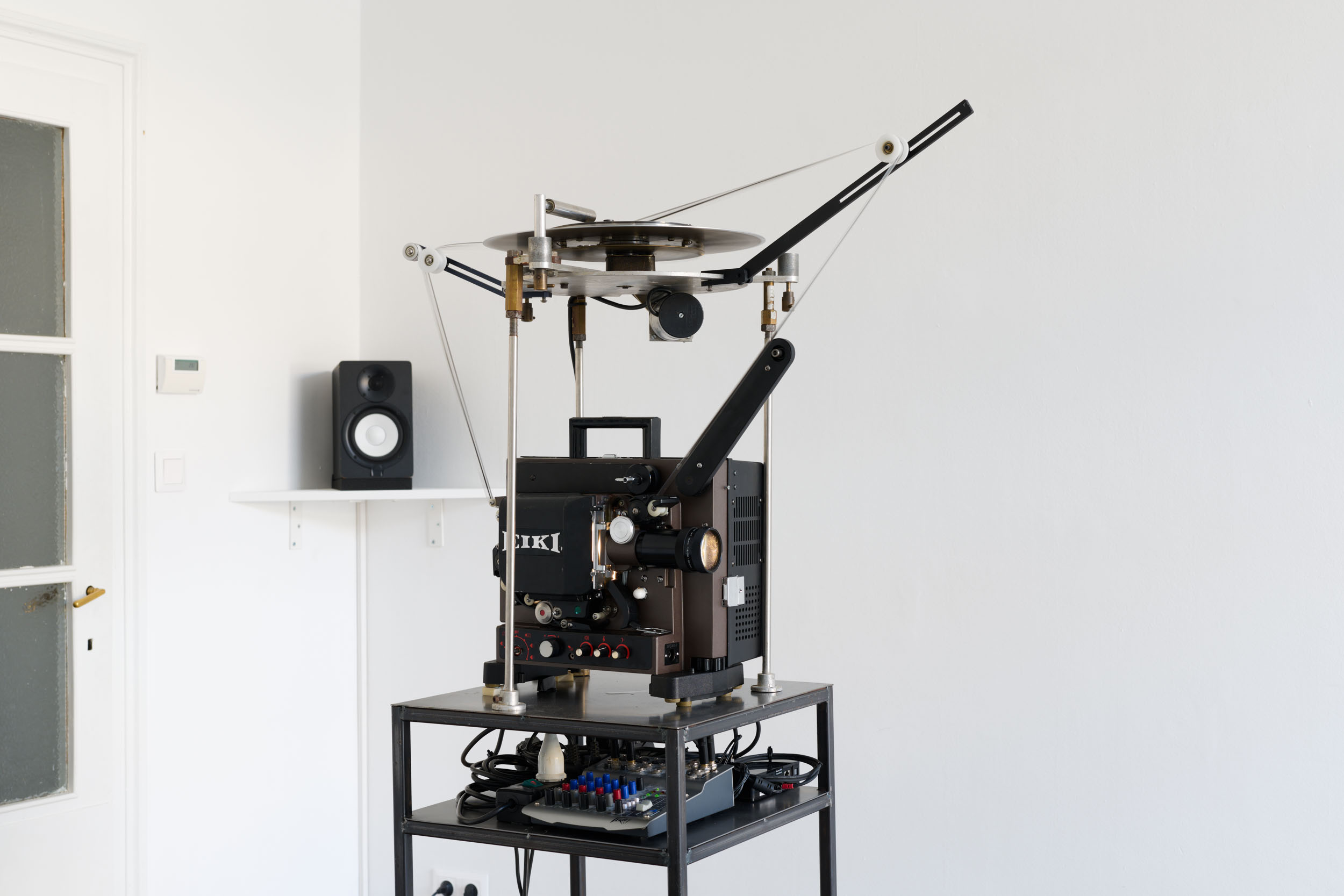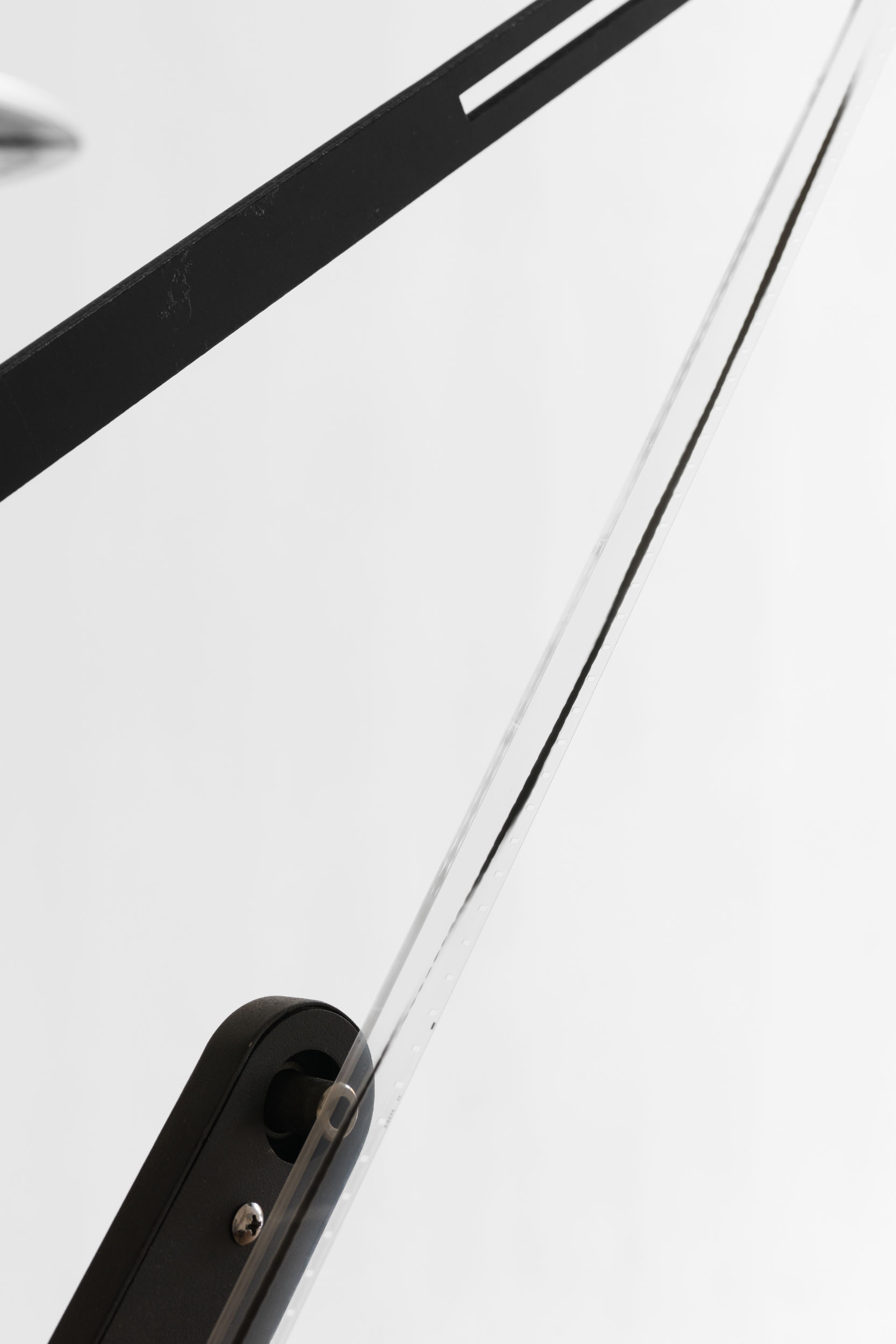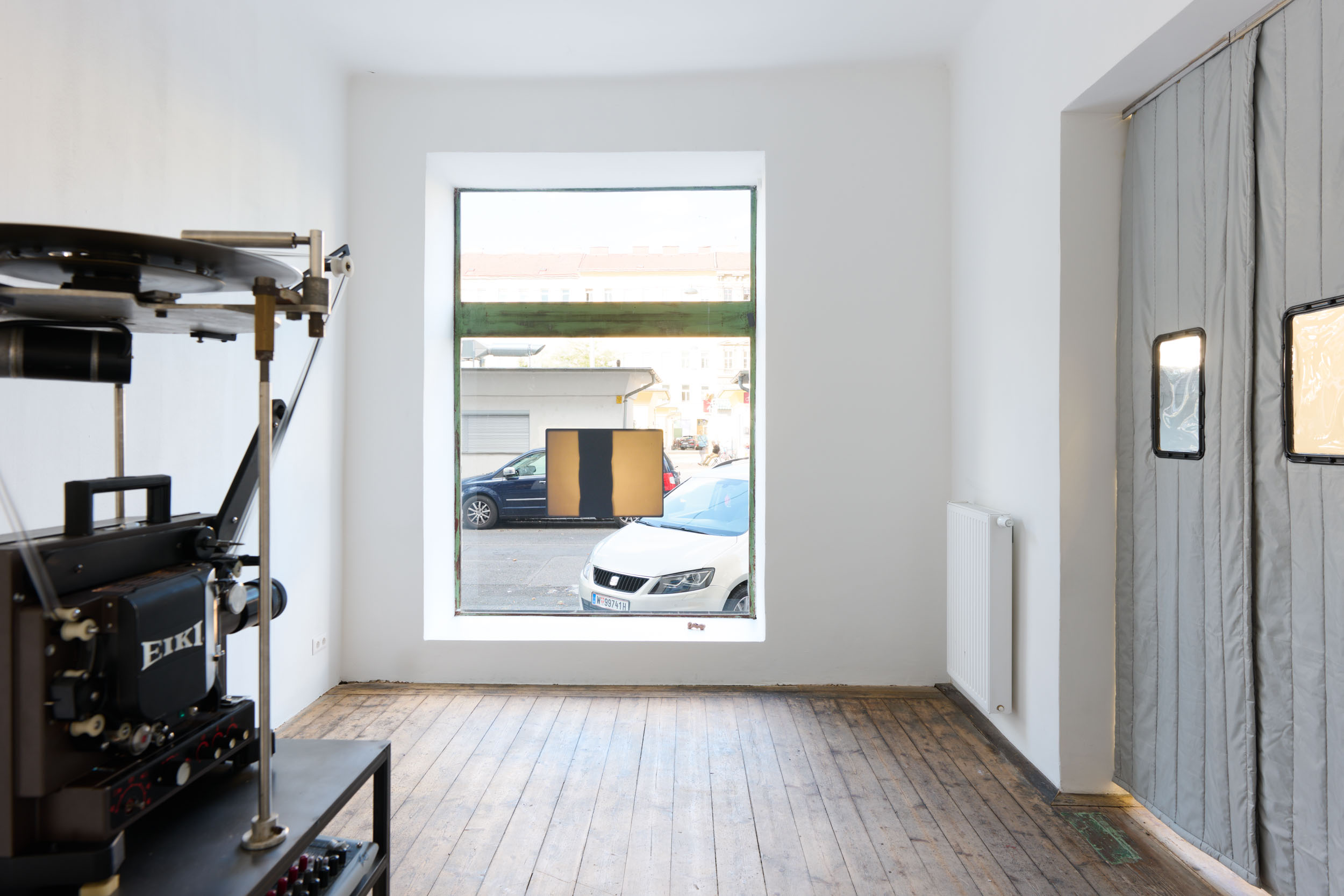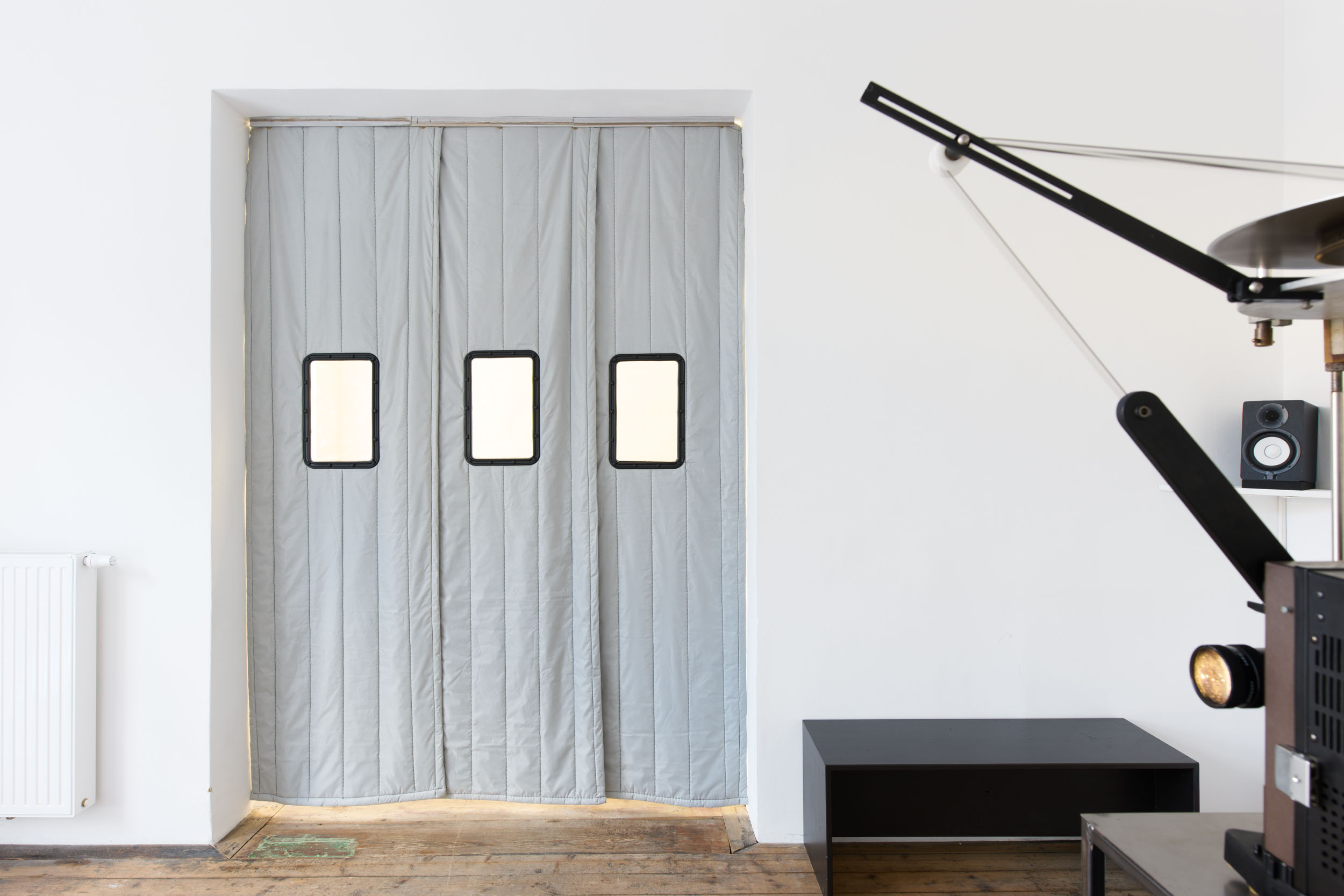Kevin Space is pleased to present Vestiges, the first solo exhibition by Amsterdam-based artist Peng Zuqiang in Austria. Continuing his investigations into the affective qualities within histories, bodies, and language, the exhibition unfolds around two newly produced film installations. While analog film generally lays the groundwork for his practice, in this exhibition, the artist for the first time works and experiments directly on the film as material, reflecting upon his usually camera-led mode of moving image making.
The artist’s experiments on the celluloid material become evident in his most recent installation Déjà vu (2023). Using the cameraless technique of photogram (1) as the image-making method, a 16mm film projection onto the large-scale window of the exhibition space unveils an abstract, flickering black and white image of a vertical line in constant movement. For this work, the artist exposed 30 meters of metal wire directly onto 30 meters of film negative. The metal wire, here, may be read in all its ambivalence, as a device for entrapment, as a tool of escape from high rise building, or of erotic pleasure even. Along these lines, the question whether and how affect travels and how one’s own physical experience, deprived of its direct visual representation, can be related to the injuries of others also become the driving questions of the sound piece of the installation. Underlaid with the booming bass rhythm derived from protest chanting, the narrator’s voice interweaves personal memories of physical injury with others’, whether from accident, hate crimes, or police brutality. If a déjà vu ‘is just a bodily sensation, not a real memory,’ (2) is it possible to use one’s own physical memory to understand or relate to someone else’s experience? The line in Déjà vu becomes an ontology for the thin membrane, characterized by afflictive transfers and the perpetual inscribing and exposure of memories, emotions, and sensations––analogous to the presence of the film itself and the pervasive sonic and mechanical clatter of the 16mm film projector.
Like a déjà vu of sorts, this question also resurfaces in a 3D-printed clay replica of a precious Qing dynasty calligraphy brush rest on the window seat in the exhibition space. Originally made of jade-like opaque glass and to be found in the households of royals, artists, or poets (usually men), the brush rest is molded in the shape of a kneeling naked boy leaning forward on the floor and translates into an object of status (and perhaps homoerotic desire). Just like the imprint of a wire left on the celluloid of the film, the visceral cracks and wounds on the artist's copy's head and body testify to a longstanding history of violence and objectification of vulnerable subjects.
The borders between subject and object, consumer and consumed, stimulator and the affected, are further distorted in the three channel video installation Autocorrects (2023). Building upon the artist’s previous interest in music and sentimentality, the musical composition is reminiscent of downtempo beat music in the Chinese speaking music industry from the early 90s; a genre heavily influenced by earlier movements from the US and Europe, also by way of Japan. Charged with feelings, and amplified by rhythmic narration, this locally adapted genre often uses specific synths and instruments to construct a certain sense of urban sentiment, a reflection of the booming of urban development and its atmosphere at that time.
Working with the genre’s tropes, the song starts with a thunderstorm and a telephone ring, and directly cuts to another sample: a found interview with a Western music producer writing for the Korean pop music industry casually comments on the different relations to feeling in music production between ‘us’ and ‘them’. Who writes from feeling, and who’s more structured?
As the lyrics slip in between memories, app chats, description of violent tools and protest slogans, the ‘I’ and ‘U’ are never fixed, they traverse through offenses, sensations, and scenes of intrusion, captures and injuries. What does one lose when one sends a palm pic to someone for a reading? How is one’s own forgetfulness on names, related to the state choreographed amnesia? Just like the autocorrects function on the phone, the ‘I’ slips to ‘U’ and back. The infliction of reciprocity and interconnectedness of affects is further epitomized in the lyrics, continuously rendering the intimacy and transitional modes of affecting or being affected.
While the video channels display fleeting images recorded in transitional spaces such as airports and hallways, as words are laser-engraved into the celluloid of the film—questioning further the peripheries and membranes and vulnerability of our materialized skins/surfaces, thoughts, and emotional worlds. Likewise reminiscent of a setting of a karaoke bars or an isolation unit, the curtains itself act as a membrane and are employed as both boundary-objects and as a site of connectedness between the two works, creating an expanded field of relations and movements oscillating between them.
The artist would like to thank Qidi FENG for the appearance in the film work and Georg Hartwig for the music composition and sound design.
The works on view have been produced with the support of Fondazione Sandretto Re Rebaudengo, illycaffè, Kunstverein Kevin Space, and Antenna Space. Peng Zuqiang's solo exhibition travels to Fondazione Sandretto Re Rebaudengo in Turin opening on November 2, 2023 in the context of illy Present Future 2022 Prize Exhibition, in collaboration with Artissima.
Peng Zuqiang works with film, video and installations. Exhibitions and screenings include Cell Project Space, E-Flux screening room, Times Museum, UCCA Beijing, Schirn Kunsthalle Frankfurt IDFA, and Open City Doc Festival. He is a recipient of the Illy Present Future prize in 2022, and the Dialog Award at EMAF 2023. A resident artist at Rijksakademie van beeldende kunsten (2022-24), he lives and works in Amsterdam.

